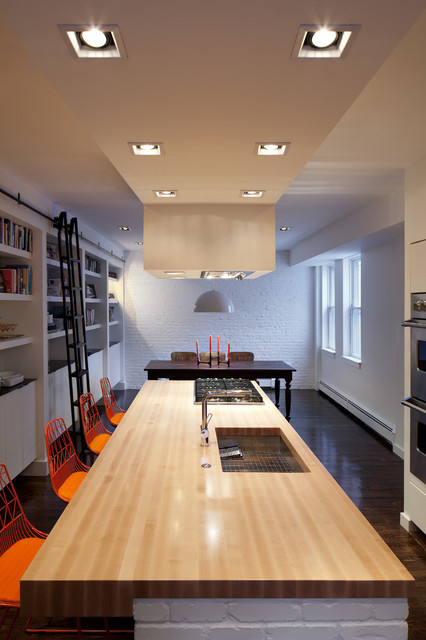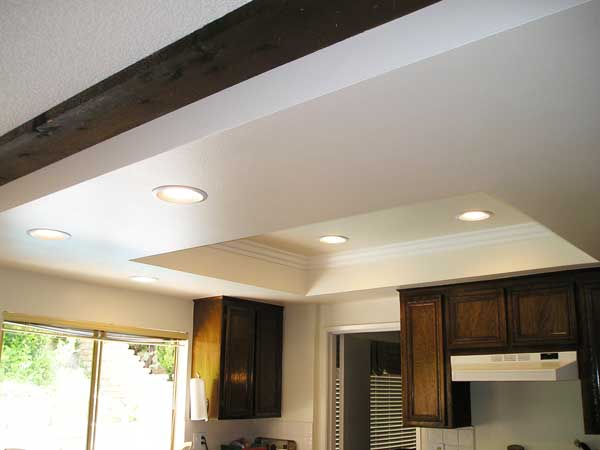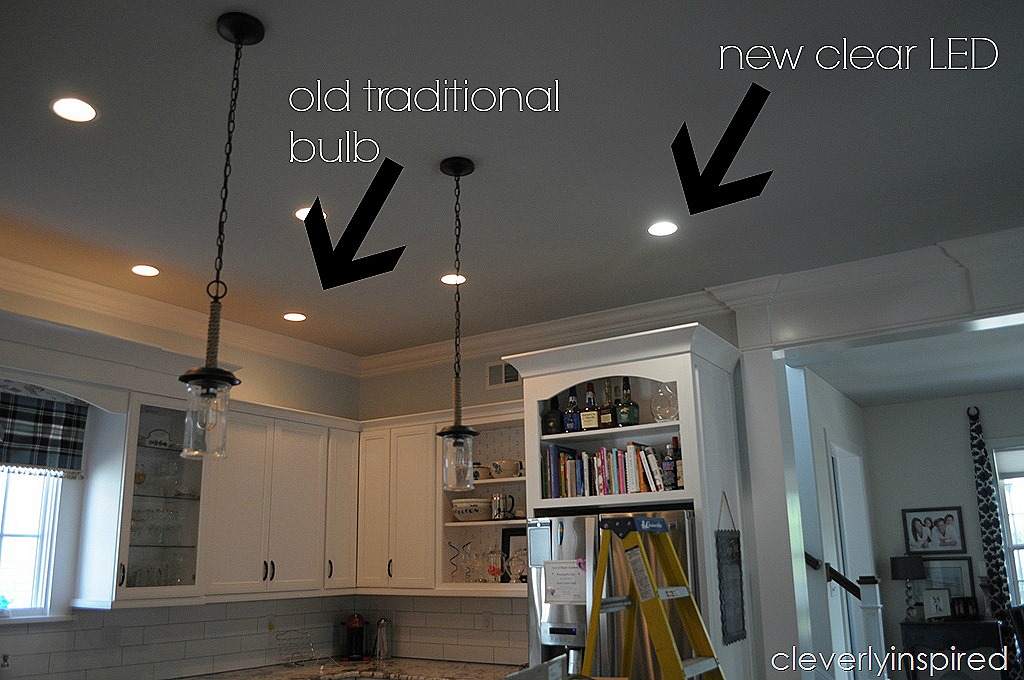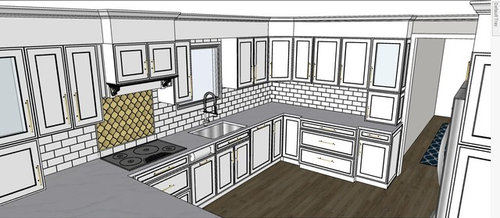Choosing Kitchen Recessed Lighting
Recessed lighting, also known as downlights or can lights, is a popular choice for illuminating kitchens due to its sleek appearance and ability to provide even, ambient light. However, choosing the right recessed lighting for your kitchen can be challenging with the plethora of options available. From bulb types to placement, there are several factors to consider to ensure you achieve the perfect balance of functionality and aesthetics. In this guide, we’ll delve into the essential steps to help you choose recessed lighting for your kitchen effectively.

Assess Your Kitchen Layout and Lighting Needs
Before diving into the specifics of recessed lighting, it’s crucial to assess your kitchen’s layout and lighting requirements. Take note of the size and shape of your kitchen, as well as any architectural features or obstacles that may affect lighting placement. Consider how you use your kitchen space and identify areas that require adequate lighting, such as countertops, cooking areas, and dining spaces. Additionally, think about the ambiance you want to create – whether you prefer bright, task-oriented lighting or a softer, more inviting atmosphere.
Once you’ve assessed your kitchen’s layout and lighting needs, create a lighting plan that outlines the placement of recessed lights. Start by mapping out the primary areas that require illumination, such as above the sink, stove, and kitchen island. Next, consider supplementary lighting for areas that may need additional brightness, such as under cabinets or in dark corners. By having a clear plan in place, you can ensure that your recessed lighting effectively meets your kitchen’s functional and aesthetic requirements.
Choose the Right Bulb Type and Color Temperature
When selecting bulbs for your recessed lighting fixtures, consider both the bulb type and color temperature to achieve the desired lighting effect. LED bulbs are a popular choice for recessed lighting due to their energy efficiency, longevity, and versatility. They come in various color temperatures ranging from warm to cool, allowing you to customize the ambiance of your kitchen.
For general ambient lighting in the kitchen, opt for LED bulbs with a color temperature of around 2700K to 3000K, which emits a warm, inviting glow. If you prefer brighter, task-oriented lighting for cooking and food preparation areas, choose bulbs with a higher color temperature (3000K to 4000K) for crisp, white light that enhances visibility. Avoid bulbs with color temperatures above 4000K for kitchen lighting, as they can create a harsh, sterile ambiance that may not be conducive to a welcoming kitchen environment.

Consider Fixture Size and Trim Options
The size and trim style of recessed lighting fixtures play a significant role in determining the overall aesthetic of your kitchen. Consider the ceiling height and available space when choosing the size of your fixtures to ensure they complement the scale of the room. For standard ceiling heights (8 to 9 feet), opt for smaller, low-profile fixtures to avoid overwhelming the space. For higher ceilings, larger fixtures with adjustable trim options can provide adequate illumination while adding visual interest to the room.
When it comes to trim options, consider the style and finish that best suits your kitchen decor. Trim options range from simple and understated to decorative and ornate, allowing you to customize the look of your recessed lighting fixtures to complement your kitchen design. Choose trim styles that blend seamlessly with your existing fixtures and finishes, such as cabinet hardware, faucets, and appliances, for a cohesive and polished aesthetic.

Ensure Proper Spacing and Placement
Proper spacing and placement of recessed lighting fixtures are essential for achieving balanced illumination throughout your kitchen. Aim for even coverage by spacing fixtures evenly and strategically based on the size and layout of your kitchen. As a general rule of thumb, space recessed lights are approximately 4 to 6 feet apart for uniform lighting distribution.
When determining placement, consider the task areas that require focused illumination, such as countertops, cooking surfaces, and dining areas. Position fixtures directly above these areas to minimize shadows and ensure adequate visibility for tasks such as food preparation and cooking. Additionally, use adjustable fixtures or directional trim options to direct light where it’s needed most, such as highlighting artwork or architectural features.

Common Mistakes to Avoid
Ignoring Ceiling Height: Failing to consider the ceiling height can result in choosing recessed lighting fixtures that are either too large or too small for the space, impacting the overall aesthetic and functionality of the lighting design.
Mismatched Trim Styles: Choosing trim styles that clash with your kitchen decor can disrupt the cohesive look of the space. Be mindful of selecting trim options that complement existing fixtures and finishes for a harmonious design.
Inadequate Spacing: Improper spacing of recessed lighting fixtures can lead to uneven illumination and shadows in the kitchen. Ensure fixtures are spaced appropriately to achieve balanced lighting coverage throughout the room.
Neglecting Task Lighting: Overlooking the need for task-oriented lighting in key areas such as countertops and cooking surfaces can hinder visibility and functionality in the kitchen. Incorporate focused task lighting to enhance usability and efficiency.
Ignoring Color Temperature: Neglecting to consider the color temperature of LED bulbs can result in lighting that is too harsh or too warm for the desired ambiance. Choose bulbs with appropriate color temperatures to create the desired atmosphere in your kitchen.

What is the ideal color temperature for recessed lighting in the kitchen?
The ideal color temperature for recessed lighting in the kitchen depends on the desired ambiance. For a warm, inviting glow, opt for bulbs with a color temperature of around 2700K to 3000K. For brighter, task-oriented lighting, choose bulbs with a higher color temperature (3000K to 4000K) for enhanced visibility.
How do I determine the number of recessed lights needed for my kitchen?
The number of recessed lights needed for your kitchen depends on factors such as the size and layout of the space, as well as the desired level of illumination. As a general guideline, aim for even spacing and coverage by placing fixtures approximately 4 to 6 feet apart.
Can I install dimmer switches with recessed lighting in my kitchen?
Yes, dimmer switches can be installed with recessed lighting fixtures to adjust the brightness and create different lighting effects in the kitchen. Dimmers offer flexibility in controlling the ambiance and can help save energy by lowering light output when full brightness is not required.
What are the benefits of using LED bulbs for recessed lighting in the kitchen?
LED bulbs offer several benefits for recessed lighting in the kitchen, including energy efficiency, longevity, and versatility. LED bulbs consume less energy than traditional incandescent bulbs, last significantly longer, and come in various color temperatures to suit different lighting needs.
How do I ensure proper installation of recessed lighting in my kitchen?
Proper installation of recessed lighting in the kitchen requires careful planning and adherence to safety guidelines. It’s recommended to consult with a qualified electrician or lighting professional to ensure correct wiring, placement, and compatibility with existing electrical systems.
Cove Lighting Creative Illuminating Concept For Your Home Or Business

Brightest Recessed lighting for Kitchen Kitchen ceiling lights, Recessed lighting living room

What kind of lights can I put in this kitchen?

Vintage-inspired pendant lights hang above an expansive island in this Modern Farmhouse kitchen

New kitchen design with island french country sinks 24 ideas French country kitchen with

Brightest Recessed lighting for Kitchen – Cleverly Inspired

Kitchen recessed lighting help

Related Posts:
- Chrome Kitchen Island Lighting
- Photos Of Kitchen Islands With Pendant Lighting
- Light Grey Kitchen Cabinets What Colour Walls
- Best Lighting Over Kitchen Island
- Lighting Over Kitchen Island Photos
- Kitchen Strip Light Fittings
- Under Cabinet Lighting Kitchen Halogen
- Pinterest Pendant Lights Kitchen
- Kitchen Island Lighting Low Ceiling
- Kitchen Rope Lighting Ideas
